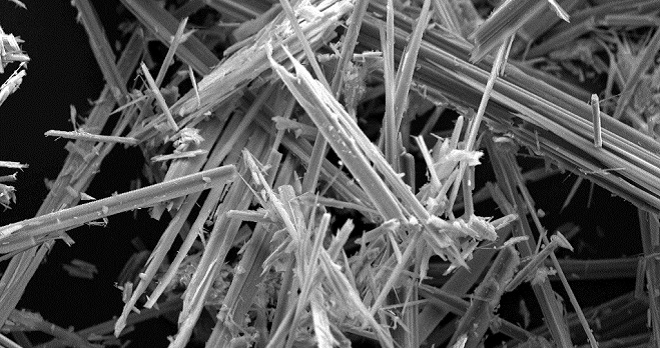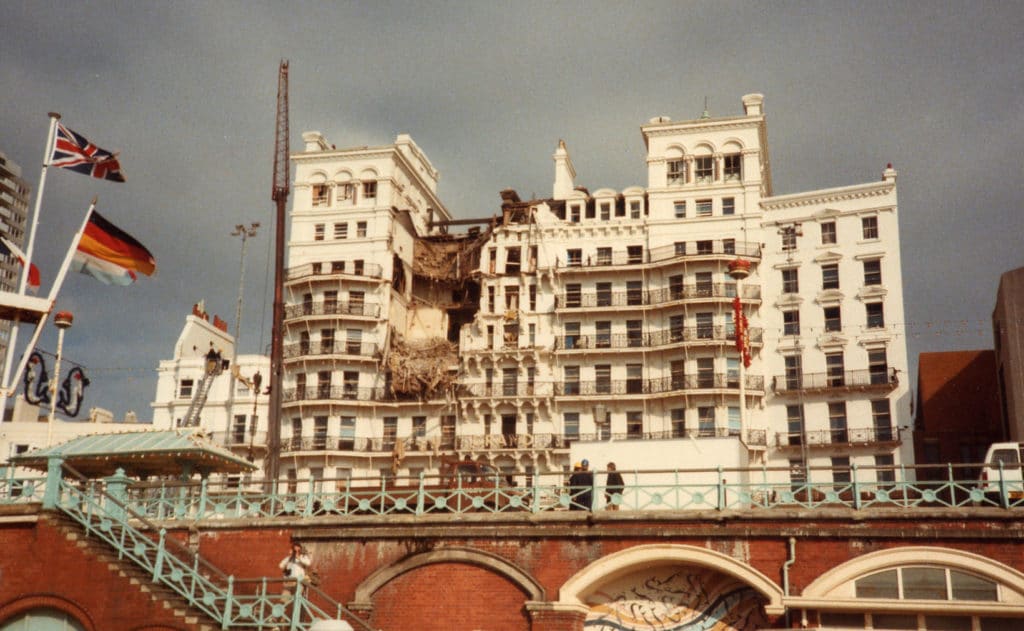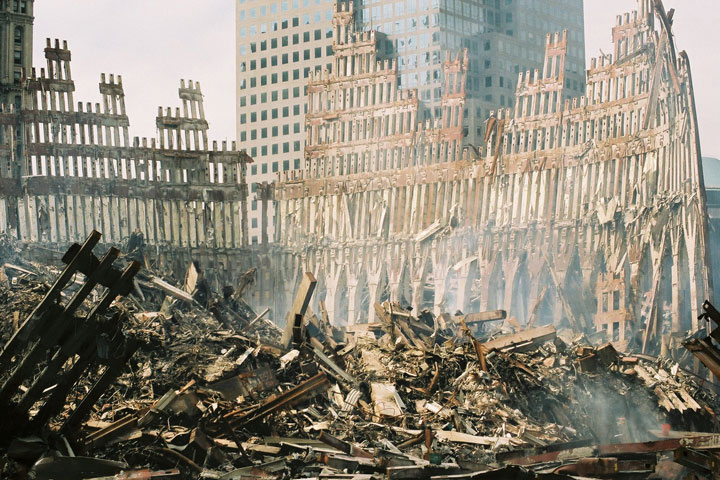How acts of terrorism are starting to cause asbestos deaths

Exposure to asbestos dust and fibres can cause a number of debilitating and fatal illnesses. These include mesothelioma, asbestos related lung cancer, asbestosis and benign pleural diseases, including diffuse pleural thickening and pleural plaques. Mesothelioma is sadly an incurable cancer almost always caused by asbestos.
Today, the dangers associated with asbestos exposure are well known thanks to awareness days, and its use in the UK construction industry has been banned since 1999. There are also a number of strict regulations for the safe handling and removal of asbestos to prevent exposure. Nevertheless, there is still a significant risk posed if asbestos is disturbed unknowingly and a recent survey has shown that asbestos has been found in over 80% of schools in England and Wales.
Who is at risk?
Mesothelioma can be caused by inhaling even small levels of asbestos dust. This can make pinpointing the source of the disease difficult. More and more frequently, we are seeing people who have developed mesothelioma, yet have never worked with asbestos. They may have washed their husband’s overalls which were contaminated with asbestos dust or have been exposed in schools; either as pupils, teachers or other staff. Others have had environmental exposure to asbestos in that they have lived in close proximity to industrial premises where asbestos products were used.
As recently as 2015 however, a new and alarming source of potential exposure has emerged that very few would have considered; that of terrorism.
Manchester 1996
The media has in recent months reported the upsetting case of Stuart Packard who sadly died of mesothelioma at the age of 40 in December 2015. Mr Packard was called out as an emergency security guard following the IRA terrorist attack in June 1996 when the Arndale Shopping Centre in the heart of Manchester was bombed. 200 people were injured in the attack, and buildings within a half mile radius of the blast were completely destroyed.
The attack itself and the subsequent demolition work led to clouds of dust being released into the atmosphere. Many of those buildings contained huge amounts of asbestos, from asbestos insulation boards in partition walls and ceilings, to asbestos cement roofs and guttering. Pipework and boilers within the buildings were also lagged with asbestos.
Sadly it appears that Mr Packard was in the vicinity of the Arndale Centre following the attack and was exposed to the asbestos dust. The terrorist attack itself did not actually cause any deaths, but almost two decades later, Mr Packard, the first fatality of the 1996 Arndale attack, developed mesothelioma from which he died.
The potential for further deaths of this nature is unthinkable. Many thousands of people could yet be affected as mesothelioma has a time lag of between 10 and 50 years from the actual exposure to the onset of the disease. Whether the IRA terrorist attack in 1996 will take any more lives remains to be seen.
Brighton 1984
Prior to the Manchester IRA bombing, on 12 October 1984 The Grand Hotel in Brighton was also the subject of a terrorist attack. The attack took place during the Conservative Party Conference and was aimed at Margaret Thatcher and her Cabinet. It tore the hotel apart. At the time 5 people lost their lives and 34 more were injured. Dust and debris from the hotel covered the sea front at Brighton. Again, much of that dust and debris was asbestos.
One of the first men to the scene was Jonathan Woods, an anti-terror officer from the Metropolitan Police Force. It is thought that Mr Woods was exposed to asbestos dust whilst attending the scene and sifting through the wreckage. He too developed mesothelioma from which he died in 2015. In addition, further members of the emergency services including police, paramedics and firefighters were on the scene and therefore potentially exposed to asbestos at the time.
Sussex Police Force have now written to 28 Police Officers, 14 West Sussex Firefighters and 70 East Sussex Firefighters involved in the emergency and rescue operations to provide them with advice and a letter to give to their GP about their potential asbestos exposure. Letters are also to be sent to Conservative Party members and Brighton & Hove City Councillors who were staying at the hotel at the time. Sussex University Hospital NHS Trust is also warning staff that they may have been affected. Again, due to the lag time from exposure and onset of mesothelioma we do not know how many further lives this terrorist attack will take.
New York 2001
This problem is not just something which will affect the UK. Terrorist atrocities are now widespread throughout the world. Everyone remembers the terrorist attack on the World Trade Center on 11 September 2001. The Twin Towers were built in the 1960s and it is estimated that 400 tonnes of asbestos was used in its construction. In fact an advert publicised the importance of asbestos in the construction of the Twin Towers stating:
“When the fire alarm went off, it took two hours to evacuate New York’s World Trade Centre. That is why today’s buildings have asbestos cement walls and even floors containing asbestos. Asbestos contains fire, cannot burn and holds up after metal and glass have melted down giving vital time to people to escape. You will also find asbestos sealing plumbing joints, insulating heating pipes, electric motors and emergency generators. Asbestos. We could not live the way we do without it. When life depends on it you use asbestos.”
No one could have imagined that four decades later the Twin Towers would collapse, unleashing a cloud of carcinogenic dust over lower Manhattan. 3000 people died at the time, but survivors of the attack are now left to ponder the awful thought that one day they may develop mesothelioma linked to terrorism. There were 30,000 first responders to the scene including firefighters, police officers, paramedics and building workers. Thousands of residents living and working nearby could also have been affected.
Can we do anything to prevent asbestos deaths due to terrorism?
During all of the attacks mentioned in this article, the emergency services and members of the public courageously waded in to try and save lives without thinking of their own. They were selfless in their efforts to help others and in doing so have sadly put their own health at risk.
Unfortunately, due to the random nature of terrorism there is probably little that can be done to prevent asbestos being emitted during attacks. If asbestos was removed from all public buildings and our schools then further loss of life due to unpredictable exposure could be avoided, but calls for this are unlikely to be heeded in the short term at least.
At the Asbestos Sub-Committee meeting at the House of Commons in 2015, it was proposed that a mandatory requirement be placed on employers and owners of public premises to identify and remove asbestos from buildings by 2035. Whether this is realistic given the likely scale and costs involved is questionable. Following the country’s decision on Brexit, will asbestos removal be a priority? Perhaps we should be concerned about the potential dilution of asbestos health and safety regulations regarding asbestos when the UK leaves the European Union.
However for members of the public who bravely help and bystanders in close vicinity of an attack, there is regrettably little that can be done to reverse past, or prevent future exposure. Only time will tell as to the long term effects of these acts of terrorism.

